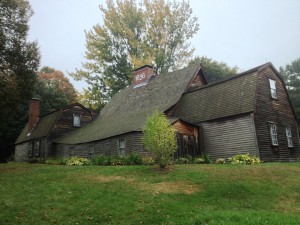I was recently a guest lecturer for a graduate museum studies class as part of the American Indian Studies program at Minnesota State University, Mankato. When I agreed to speak to the class I assumed I would be focusing on my academic work: my work as a public historian, work outside of genealogy. I was surprised to find that the students were most interested in discussing my genealogical work in the context of public history.
This got me thinking about the relationship between public history and genealogy. Public history is most simply defined as the study of how the general public engages with history, whether that be at historic sites, archives, government agencies, or even corporations. Genealogy was not a subject area that was explored in my graduate work in public history, though I strongly believe it should be a part of any public historian’s studies. Some genealogical work is often required for many of the positions filled by public history practitioners. In my own career I have used genealogy in museums, historic houses, and in my work for the National Park Service. I would argue that skills from both fields can work to enhance each other and enrich our understanding of our past, our present, and how we relate to each other and the world around us.
A strong example of how genealogy plays an important role in public history is in the work of practitioners at historic house museums. My time as the curator at the Fairbanks House in Dedham, Massachusetts, just prior to my appointment in Research Services here at NEHGS, made clear to me the importance of genealogy to the public. An historic house is not only boring but is also essentially lacking in significance if not for the stories of the people who once made it their home. In developing tours, educating school children, and processing collections, my days were filled with genealogical research on the Fairbanks family. Without the personal connection to the people who lived in the space, any information we provided about lifestyles of the past or the architecture of the house just did not reach guests in the same capacity.
I realized that when recounting the lives of these ordinary people while giving tours or lectures on the Fairbanks House, I was not only acting as a public historian but as a public genealogist. I was bringing genealogy to an audience of people who might not themselves be family historians. In public history we often discuss how the ways we relate to the past can be dictated by where we see ourselves in the present. The past can provide meaning to us in our current lives. Genealogy is often the study of ordinary people, but it is our connection to our ancestors that makes the past more meaningful for us. It seems to me the two fields are essential to one another, and that perhaps we need more public genealogists.
Share this:
About Meaghan E.H. Siekman
Meaghan holds a Ph.D. in history from Arizona State University where her focus was public history and American Indian history. She earned her B.A. in history from Union College in Schenectady, New York, the city where she grew up. Prior to joining the NEHGS team, Meaghan worked as the Curator of the Fairbanks House in Dedham, Massachusetts, as an archivist at the Heard Museum Library in Phoenix, Arizona, and wrote a number of National Register Nominations and Cultural Landscape Inventories for the National Park Service. Meaghan is passionate about connecting people with the past in meaningful and lasting ways. She enjoys finding interesting anecdotes about an ancestor to help bring the past to life.View all posts by Meaghan E.H. Siekman →
